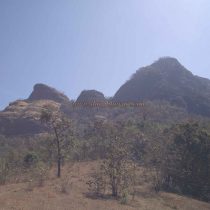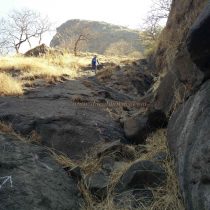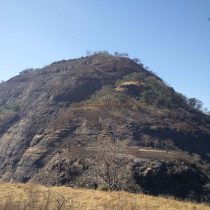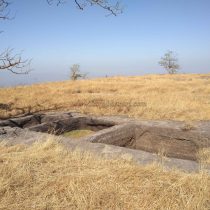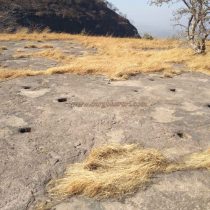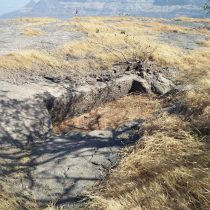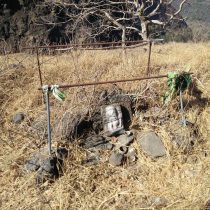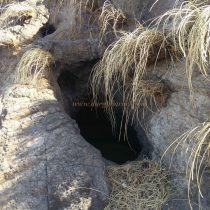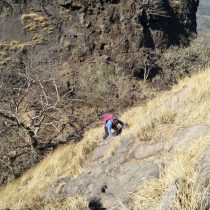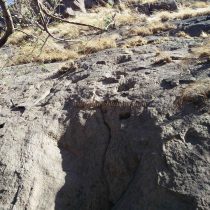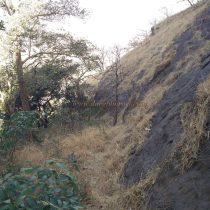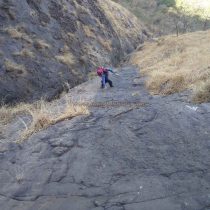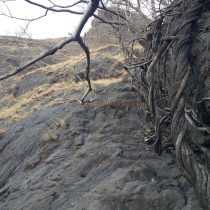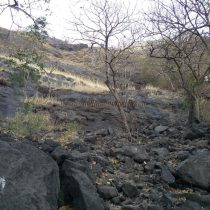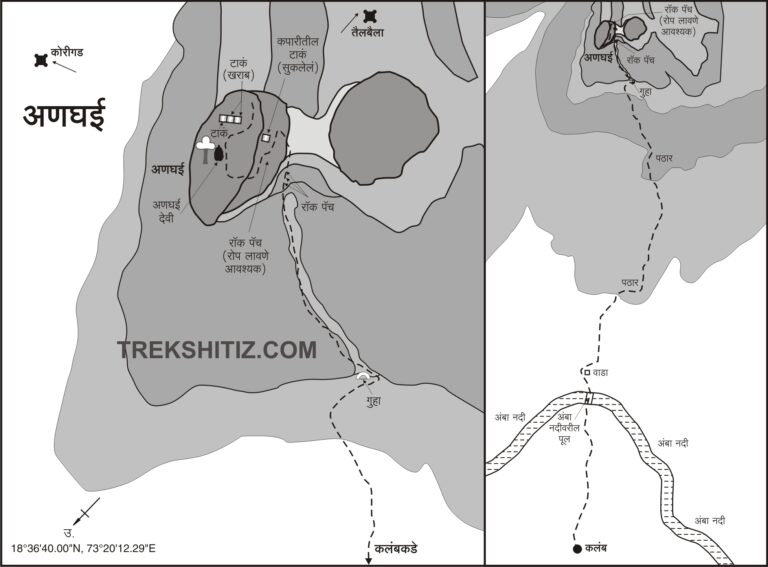ANGHAI
TYPE : HILL FORT
DISTRICT : RAIGAD
HEIGHT : 1624 FEET
GRADE : HARD
Each fort has its uniqueness and because of this special quality, the fort will always be remembered. In Mulshi taluka of Pune district, there is such a unique but unfamiliar fort called Anghai. We remember this fort because of the way we have to cross the gorge path to climb it. To reach this fort, you have to climb a steep path of the gorge of 200 to 250 feet. Although the fort is geographically located in Pune district, the road passes through Kalamb village near Jambulpada on Khopoli-Pali road in Raigad district. This fort near Mumbai-Pune is still unfamiliar to many fort lovers and the credit for bringing this fort to light goes to Anand Palande. The locals know this fort as the fort of Goddess Anaghai, but they visit this fort once in a while. Kalamb is 100 km from Mumbai and 110 km from Pune.
...
After entering the village of Jambhulpada on the Khopoli-Pali road, from the Rest in Forest Hotel, the road on the left leads to the village at the foot of Mruggad/Bheliv fort, while the road on the right is 5 km from the eastern foot of the Sahyadri goes to Kalamb village above. Looking through the village of Kalamb, one can see three cones that have escaped from the Sahyadri range. The cone on the left is the Anaghai fort and the road leading to the fort from a gorge between the fort and the adjoining hill. Once you understand the way from the villagers, if you walk towards this gorge in mind, there is no possibility of making a mistake. In ten minutes we come to the mango orchard on the hill after crossing the farm and river outside the village. Behind the house in this garden, a muddy path enters the forest on the plateau. The sign of this path is that it passes through two coconut trees and the path is marked with white arrow marks. The marks of these arrows take you to the plateau below the gorge path, but since there are no trails to go to the mouth of the gorge and there are many footpaths. You have to make your way of keeping an eye on the gorge. Once we came to the foothills of the forest, the arrow marks started appearing again. From here, the path enters the dense forest and after walking through this forest, it takes us to a natural cave at the beginning of the gorge in half an hour. It takes an hour and a half to reach here from the village. From here the view of the fort begins. There is a path leading to the fort from the gorge on the upper side of the cave and at the beginning of this path you can see a few steps and a bamboo planting hole next to it. This path takes you to the gorge between the fort and the adjoining hill in half an hour by climbing the steep rock at 60-70 degrees from such a narrow gorge. When you reach the gorge, at the foot of the fort hill, there is a rampart of stone on both sides. In this gorge, there is a notch to climb up to a height of 5-6 feet in the cliff of Anaghai fort which is dangerous to climb in the rainy season. At first, this path goes to the right then turns to the left. Along the way, we come across a small circular tank carved in the rock. The spout has been carved to draw water in this tank. You enter the fort by crossing these tanks. There are two cisterns on the hillside and one of them is partially carved. In the next part of the road, you can see the rough idol of Anaghai Devi in the open. The perimeter of the fort is spread over an area of about one and a half acres and the height of the fort is 1210 feet above the sea level. Apart from the first three tanks, five more tanks can be seen on top of the fort. Two of these tanks are partially extinguished and the remaining three tanks are grouped. One of these tanks has potable water. But it should only last until March. On the plateau of the fort, you can see the pits made for breaking rocks as well as the carved foundation of a house. Due to the small size of the fort, Anaghai fort must have been used for patrolling Korigad, Khopoli, and Pali area. 15 minutes is enough to walk around the fort. It takes four and a half hours to reach the fort and return to the village.
© Suresh Nimbalkar


